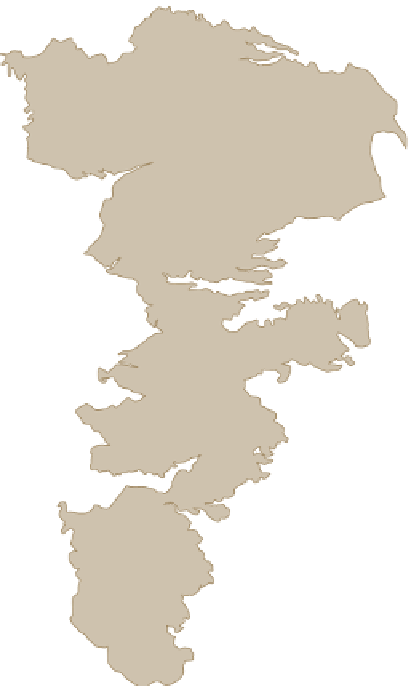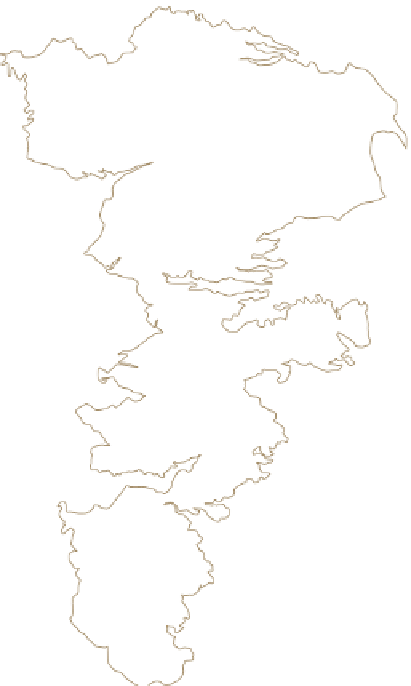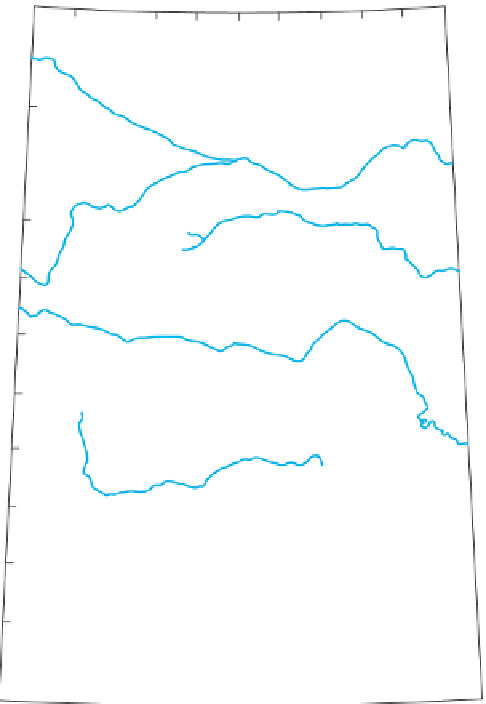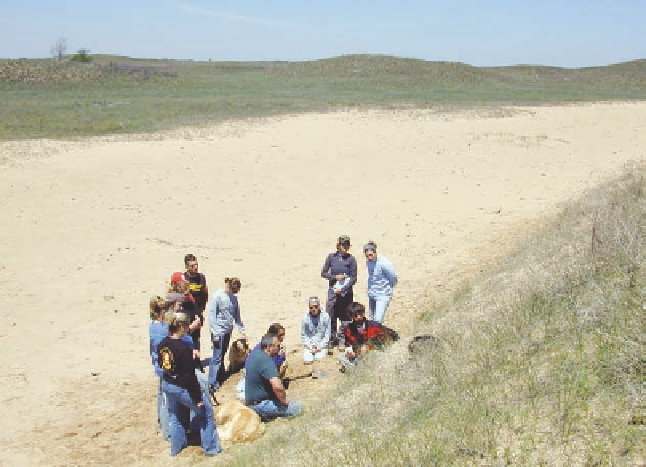Geoscience Reference
In-Depth Information
105
°
W
100
°
W
South Dakota
Wyoming
Nebraska
40
°
N
u
R
Kansas
Colorado
Oklahoma
(b)
Water-level change,
in feet
35
°
N
Figure 15.8 Drawdown of the High Plains Aquifer.
(a) Due
to excess groundwater mining, the water table has dropped sig-
nificantly in an area that ranges from southwestern Kansas to the
Texas panhandle. (
Source:
U.S. Geological Survey.) (b) The ef-
fect of aquifer depletion has been significant on many streams.
For example, prior to aggressive groundwater extraction in the
region, Rattlesnake Creek in south-central Kansas was a peren-
nial, spring-fed stream. Now, it is dry most of the time, as shown
here, because the water table is far below the level of the stream
bed. The students in the foreground are studying the sand dunes
exposed along the old stream bed.
Declines
More than 150
100 to 150
50 to 100
10 to 50
Rises
Less than 10-foot
change
Extent of the
High Plains Aquifer
Texas
New Mexico
0
100
200 km
(a)
0
100
200 mi
are attempting to maximize short-term profits by mining the
aquifer until it disappears in their region, at which time they
will shift to dry-land agriculture or leave farming entirely. It is
a complex issue that bears watching in the future.
Subsidence is a particularly significant problem in and
around large cities. A great example of this kind of impact can
be seen at Venice, Italy. This beautiful city is approximately
1400 years old and was constructed on a landscape consisting
of over 100 low-lying islands in a lagoon in the northern part
of the Adriatic Sea. Underlying the islands are about 1000 m
(about 3300 ft) of weakly cemented deposits of sand, gravel,
clay, and silt. The coarse sands and gravels of these deposits
contain fresh groundwater resources that have been extensively
exploited for human use. The associated subsidence of the land-
scape has been so great that many Venetian homes are now at
the shoreline and flooding is common. In addition, salt water
from the Adriatic is beginning to seep into the city's water sup-
ply. Similar problems have also recently occurred in China and
California. In the San Joaquin Valley of California, for example,
groundwater removal for irrigation has caused the ground to
subside as much as 4.8 m (16 ft) in places over a 35-year period.
This issue will be discussed more thoroughly in Chapter 20.
Subsidence
Human interactions with the High Plains Aquifer demonstrate
what happens to the water table elevation when groundwater is
tapped excessively. In addition to these changes, which occur
deep within the ground, adjustments sometimes take place on
the surface when large amounts of groundwater are removed,
either to provide irrigation or to supply drinking water in heav-
ily populated regions. One kind of impact that can occur is that
sediments become compacted because water is lost from pore
spaces. The most obvious surface change occurs when the land
sinks due to the removal of water from underlying aquifers.
This type of response is called
subsidence
.
Groundwater Contamination
Another major environmental problem associated with the
relationship between humans and groundwater is contamina-
Subsidence
The settling or sinking of a surface as a result of
the loss of support from underlying water, soils, or strata.






























































